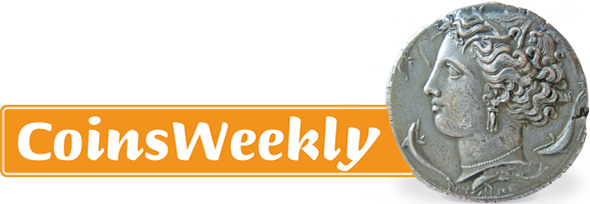Gallienus and the East
On February 15, 2018, Münzen & Medaillen GmbH offers an impressive series of coins of Gallienus stemming from the Markus Weder collection. Claire Franklin-Werz is telling the story of their historical background.
On February 15, 2018, Münzen & Medaillen GmbH offers an impressive series of coins of Gallienus stemming from the Markus Weder collection. Claire Franklin-Werz is telling the story of their historical background.
Herakles strangling the snakes, this subject occurs on the coins of some very important harbor towns of Asia Minor at the same time. This article will explain what’s behind it…
Jersey Post has just issued stamps featuring six iron age coins from a hoard found at Le Catillon, Jersey, in 1957. Celtic coin expert Chris Rudd reveals how it comes that Jersey may truly be called Treasure Island of iron age coins…
A comparison between a statue of Aphrodite found at Beth Shean and a coin type from the mint of Ptolemais reminds us of the realistic nature of statues appearing on city coins.
On Friday, March 13, 2015, Künker auctions off a Siculo-Punic coin with an enigmatic depiction: on the obverse we see a beautiful woman with a Phrygian cap. Is it Dido? Is it Tanit? Or is it perhaps a completely different goddess?
In auction 304, the Osnabrück auction house Künker offers a series of early Persian coins showing portraits of kings and satraps, including four of the enigmatic tetradrachms of Athenian type with small portraits or Aramaic lettering. They are likely to have been produced under Persian orders for paying Greek mercenaries.
This impressive piece belongs to a small series of silver medallions celebrating the vicennalia of Constantine II, the eldest surviving son of Constantine the Great, in 336.
Our sponsor, the MoneyMuseum in Zurich, will soon issue a second, revised edition of its booklet on money and currencies in history. We present the new text here on the Internet…
You are one of those people who believe than there are more things in heaven and earth than are dreamt of in your philosophy? Well, you are in accordance with a deep-seated tradition and can appeal to the fact that already in antiquity there were people who thought the same as you. ..
Why is it that for centuries – or rather thousands of years – the head has served as the motif for the side of a coin? And why has this changed in the last 200 years? Ursula Kampmann poses these questions in her book ‘MenschenGesichter,’ from which the texts for our new series are taken.
We are the bridge connecting the international numismatic world. Our readers include collectors, professional coin dealers and researchers, as well as all those involved in coin production. We are read in 170 countries! We provide you with information on everything you want to know about the subject of money – from antiquity to the present day. And much more...
Follow us
You need to load content from reCAPTCHA to submit the form. Please note that doing so will share data with third-party providers.
More InformationYou are currently viewing a placeholder content from Facebook. To access the actual content, click the button below. Please note that doing so will share data with third-party providers.
More InformationYou are currently viewing a placeholder content from Instagram. To access the actual content, click the button below. Please note that doing so will share data with third-party providers.
More InformationYou are currently viewing a placeholder content from X. To access the actual content, click the button below. Please note that doing so will share data with third-party providers.
More Information